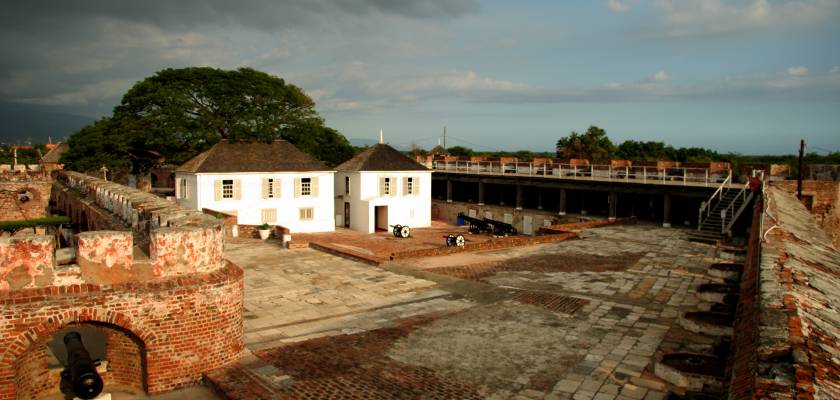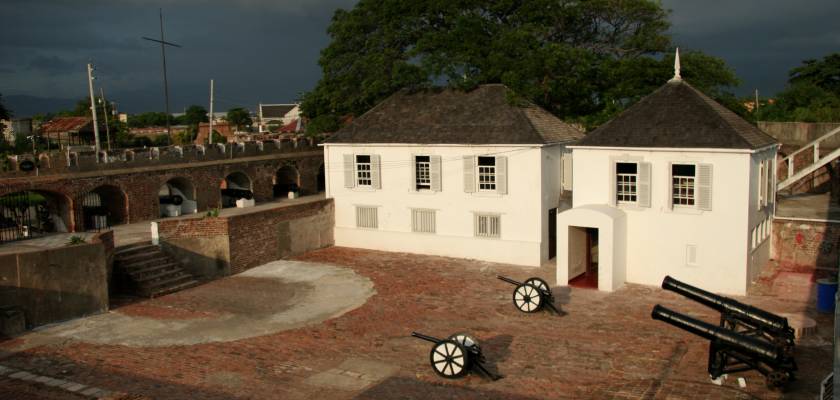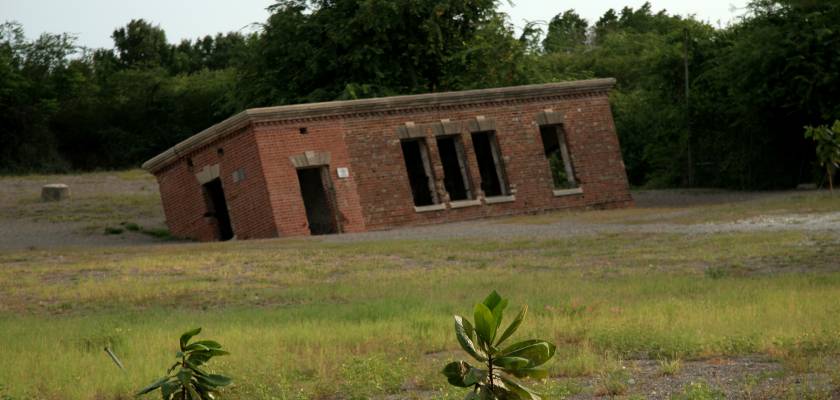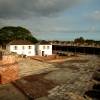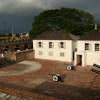Moon Author's Review
Fort Charles (9 a.m.–4:45 p.m. daily, US$5 admission/ tour) is the most prominent historical attraction in town and the most impressive, well-restored fort in Jamaica. Built in 1656 immediately following the British takeover, it is the oldest fort on the island from the British colonial period, and one of the oldest in the New World. Originally it was named Fort Cromwell on Cagway after Lord Protector of England Oliver Cromwell (ruled 1653–1658), who was responsible for designing the strategic takeover of the island meant to give Britain control over the Caribbean basin. The fort was renamed in 1662 when the monarchy was reinstated in England with Charles II as King. Fort Charles sank a meter during the earthquake of 1692.
Giddy House sits half-submerged at an awkward angle in the earth behind Fort Charles. It was built in 1888 as an artillery store by the British Navy, but the earthquake of 1907 left the building skewed as a reminder that dramatic seismic events can humble vicious buccaneers as much as the world’s foremost navy.
Admiral Horatio Nelson (1758–1805), lauded as Britain’s all-time greatest naval hero for his victorious role in the Battle of Trafalgar, spent 30 months in Jamaica, much of it at Fort Charles. Nelson was given charge of the Fort while the island was caught in fear of a French invasion; he spent the tense period pacing and nervously scanning the horizon from what’s now referred to as Nelson’s Quarterdeck, a raised platform along the southern battlement. On the inside wall of the fort there is a plaque commanding those who tread Nelson’s footprints to remember his glory.
Also within Fort Charles walls, there is the grogge shop and a very nice little museum managed by the Museum of History and Ethnography, with period artifacts, old maps, and information about Port Royal and its glorious and notorious inhabitants.

